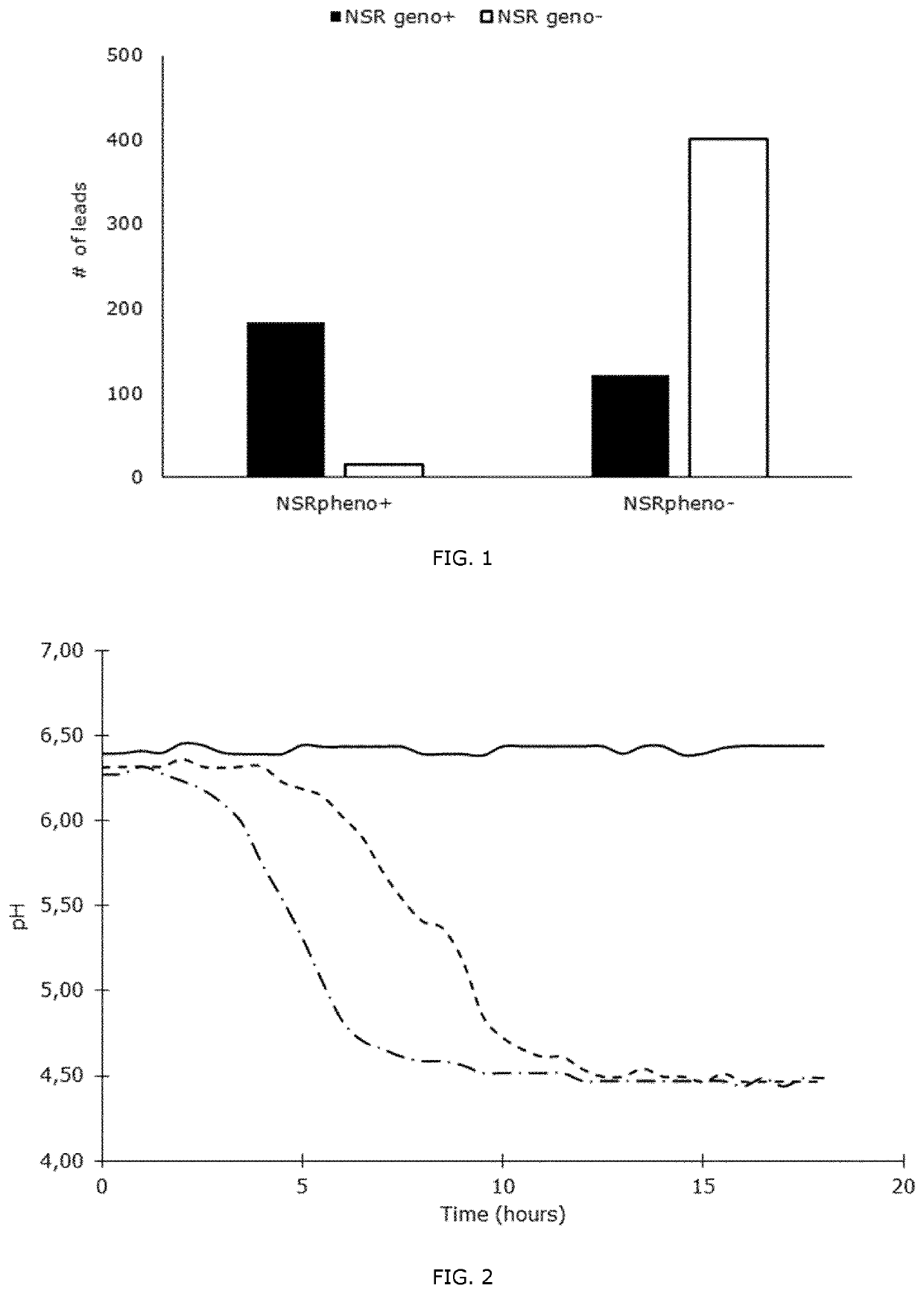Composition comprising lactococcus, methods and products thereof
- Summary
- Abstract
- Description
- Claims
- Application Information
AI Technical Summary
Benefits of technology
Problems solved by technology
Method used
Image
Examples
example 1
[0070]Lactococcal strains were measured for their capacity to acidify milk in the presence and absence of 0.5 μg / ml nisin. To recognize these phenotypes, the Lactococcus strains must therefore be able to acidify milk. Strains were grouped in nisin-sensitive, nisin-degrading and nisin-immune types. FIG. 2 depicts the results obtained.
[0071]The nisin-sensitive strains are strains of which the pH drop is below 0.4 during milk acidification when exposed to nisin, but with larger pH drops without nisin being present in the milk.
[0072]The nisin-degrading strains are the ones capable of nisin degradation resulting in nisin degradation fragments. An undesirable consequence of nisin degradation is lowered nisin concentration.
[0073]The nisin-degrading strains were delayed in milk acidifications where nisin was added, leading to at least 1.5-hour delay compared to milk acidifications without nisin addition. The nisin-immune strains are defined as strains with acidification curves not affected ...
example 2
[0078]The capacity of lactococcal strains to degrade nisin was also measured. A milk sample containing 0.9 μg / ml nisin was prepared by dissolving 200 mg Chrisin (Chr. Hansen A / S, Denmark) in 10 ml MQ water and 5 μl acetic acid, after which the solution was sterile filtered using a a Minisart 0.22 μm filter (Sartorius). A total of 400 μl of the nisin stock solution (452 μg / ml nisin A) was mixed with 200 ml of skim milk supplemented with 0.2% (w / v) sterile yeast extract. The milk sample was incubated with the tested strains for 16 hours. With HPLC-MS / MS analysis residual nisin and its NSR degradation product nisin1-28 were measured in the milk sample. Strains that could not acidify the milk pH below 6.0 were classified as non-acidifiers. Strains that degraded the nisin pool to less than 15% of the original nisin content were considered nisin degrading (NSR+), the remaining strains were considered non-nisin-degrading (NSR−).
example 3
[0079]The genotyping of important bacteriocin features of lactococcal strains was performed to link the phenotype from the first two experiments to presence of relevant bacteriocin genes. Lactococcal genes encoding for nisin-degradation nsr (plasmid pSK11P; encoding the C-terminus of the NSR proteinase) and nisin-immunity nisI and nisFEG (HM219853.1 Lactococcus lactis subsp. lactis nisin biosynthetic gene cluster) were obtained from public databases.
[0080]It can be shown, by combining the results of these three experiments, in particular for Lactococcus lactis, the nisin-immunity genotypes are linked to nisin-immunity in milk acidification and that nisin-degradation phenotype and genotype gives a distinct nisin-degrading phenotype during milk acidification, recognized as a delayed milk acidification (FIG. 2).
PUM
 Login to view more
Login to view more Abstract
Description
Claims
Application Information
 Login to view more
Login to view more - R&D Engineer
- R&D Manager
- IP Professional
- Industry Leading Data Capabilities
- Powerful AI technology
- Patent DNA Extraction
Browse by: Latest US Patents, China's latest patents, Technical Efficacy Thesaurus, Application Domain, Technology Topic.
© 2024 PatSnap. All rights reserved.Legal|Privacy policy|Modern Slavery Act Transparency Statement|Sitemap

